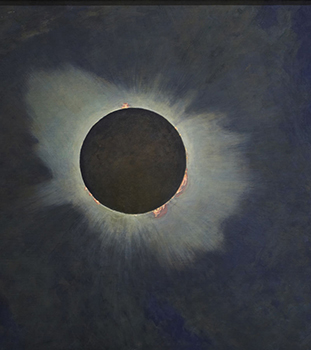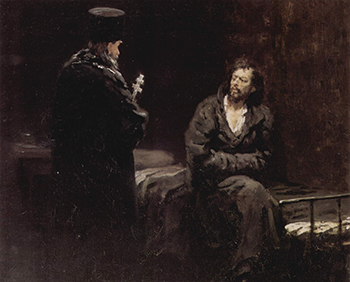From Our Archive
Debie Thomas, That You May Come to Believe (2021); For Those Who Yearn (2018).
For Sunday April 7, 2024
Lectionary Readings (Revised Common Lectionary, Year B)
1 John 1:1-2:2
John 20:19-31
Psalm 133
This Week's Essay
THANK YOU to Michael Fitzpatrick for a six-week series of lectionary essays from Easter to Pentecost. Michael was a regular staff writer for JWJ from 2020 to 2023. He is a U. S. Army veteran and philosopher. He served five years in the Army as a Chaplain's Assistant, which included two deployments to Iraq during 2004-05 and 2006-08. Michael is finishing his PhD at Stanford University.
In one of the most arresting scenes of the Greek epic poem Odyssey, the poem’s titular hero Odysseus recounts when he sought wisdom from among the dead. Odysseus journeyed into the underworld where he met his deceased mother, important prophets, and his fallen comrades at the battle for Troy.
Upon his reunion with the slain Achilles, Odysseus is surprised to discover in him a forlorn soldier of war. Perplexed, Odysseus exclaims that it must be awesome to be Achilles among the dead, being such a revered hero honored by all. Achilles’ response is unsparing, here superbly translated by Robert Fagles:
‘No winning words about death to me, shining Odysseus!
By god, I'd rather slave on earth for another man—
some dirt-poor tenant farmer who scrapes to keep alive—
than rule down here over all the breathless dead.’ (Book XI)
Greatness and glory as a fallen hero living amidst other shadowy, gloomy souls is nothing compared to the vigor and zest of embodied existence. Even the most difficult of earthly lives is better than the aimless nostalgia of the underworld. No praise of death! Achilles would exchange all his prestige for one more inhalation of real air.
Achilles’ exclamation suggests how death became a metaphor for a sub-par life. Human experience reveals that not all lives are “fully alive”; sometimes we seem closer to being a form of “living death” than a manifestation of being human. Such “deathly” lives are more like the shadowy underworld of Achilles drained of color and purpose, than the world of sunshine brimming with ecological energy and procreative adventure. This hope for the “true life,” as opposed to lives of mere perpetuation, lies at the heart of the Epistles of John.
John’s First Epistle presents the Incarnate Christ as the embodiment of the “true life.” Speaking most likely not of Jesus before his death but of the Resurrected Christ, John initially refers to Jesus as simply “the life.” Jesus is “the eternal life,” coming from the Father and in resurrected glory appearing to the community of the author. Complete joy is to share in this life in full fellowship — between all the believers, and with the Father and the Son.
|
|
|
Orthodox Icon of the Resurrected Christ.
|
To see the Resurrected Jesus is to see life itself. John forces us to ask ourselves a profoundly uncomfortable question: What is a human life? If Jesus is the manifestation of both “eternal life” and “true humanity,” what does it mean to truly live?
It’s clear for John what it doesn’t mean. A life isn’t merely putting steam on a mirror, working and sleeping solely to rinse and repeat the next day. John may be echoing a similar sentiment of the Greek philosopher Plato, who wrote, “We do not hold the common view that a person’s highest good is to survive and simply continue to exist. Instead, their highest good is to become as virtuous as possible and to continue in that state as long as life lasts” (Laws, Book IV, trans. Trevor J. Saunders). Living is more than surviving. Yet John is not imagining simply a maximally virtuous life; he believes in the life, the eternal life, the life of Jesus that is “the atoning sacrifice,” not just for those already in the church, but for all (v 2.2).
What could such a life be, if it is more than merely surviving, more than becoming as virtuous as possible? Answering this question will take the whole of John’s letter, which we’ll explore over the next few Sundays as the lectionary ambles through this epistle. Yet two powerful motifs already present themselves in the opening chapter.
The first motif is that most recognizable Johannine contrast of light and darkness. The life of God is one of pure light, without any darkness at all. True life is to participate in the pure light of God. This doesn’t mean merely having faith in God, but a faith lived out in deeds. Living in God’s light means not walking in the darkness. If we are “fellows” with God, then our lives will reflect his life, the divine light.
 |
|
Eclipse, painting by Howard Butler Russell, made of the actual 1918 eclipse as seen from Baker City, OR.
|
While we must never press metaphors too far — darkness is not inherently bad or evil, not all deeds done under cover of darkness are wicked, etc. — it’s worth pausing to reflect on why light and darkness form such powerful and universal images of goodness and sin. Darkness is the realm of the hidden, that which cannot be seen. Our eyes depend on light to perceive the contents of our environment. Of course, our reliance on light illuminating the world reflects our over-dependence on one of our senses at the expense of the others, and those of us who lack eyesight can expand our metaphors in really interesting ways. Perhaps the contrast becomes what can be manually handled as opposed to what is utterly out of reach.
Yet there is no denying the centrality of sight in the formation of our collective acts of imaging the world, and the resulting insecurity when our sight is even temporarily deprived, not by means of a physical infirmity but because the lights in our environment have been put out. As we prepare for an impending solar eclipse, astronomical historians remind us that in past cultures, eclipses were among the most terrifying of all natural phenomena. To suddenly have the sun, seen as the source of all warmth and fecundity on the earth, vanish from the sky can evoke a sense of cataclysm and finality.
Darkness includes that within which shameful deeds can be hidden, and it is also an experience of deprivation and annihilation for light-dependent creatures like ourselves. Speaking of Christ as incarnating the God of pure light is a way of saying that the true life is one in which no deed shall be hidden, where none of those elements of our world which destroy life remain in us. The Son is that life-giving source which cannot be eclipsed.
Can we attain such a life? Not by ourselves, but John does believe it is given as a gift by God to us. We can know the true life by “the blood of Jesus, God’s son, purifying from all sin” (v. 1.7). Participation of our lives in the true life is possible because Jesus laid down his true life so that by his sacrifice we can be purified of darkness and brought fully into the light. The atoning sacrifice was given to cleanse the whole world of sin.
John’s second opening motif is that “eternal life” is not a reference to some future state of affairs at which time all things are restored to God. John is speaking of our lives here and now, on the earth. Just as Achilles knew that his ethereal spirithood in the underworld wasn’t a real life, so John contends that not all existence on the earth is real life, and that God sent Jesus so that we might have this eternal life now.
 |
|
Refusal of the Confession, painting by Ilya Repin, 1880s.
|
How so? “If we confess our sins, God is faithful and just and will forgive us our sins and purify us from all unrighteousness” (v. 9). Through confession lies the road to absolution. Jesus is the Righteous Advocate, and therefore our Advocate, even when we do sin and dampen the light within us. Just as the contrast between lives of light and lives of darkness is sharply delineated, so John firmly rejects any notion that we can have eternal life if we claim that we are without sin and therefore in no need of confession or forgiveness. For in making such a claim, we are implying that God was mistaken to gift us the precious blood of Jesus through which we can be healed and made whole. We call God a liar, and his Word of life, the pure divine light, is not in us.
Does John press these sharp dichotomies to condemn his readers? By no means! He writes so that we will not sin, so that we will turn to our Advocate, who is Jesus! John is simply making clear that eternal life is something utterly distinct from a life oppressed and demoralized by the power of sin. To live captive to sin, despairing in darkness, is simply not to live. John’s testimony brings words of hope: if we want to live, then we should choose life, choose the light of God’s life, choose to be purified by the blood of the one called “the Word of life!”
As we walk through the great high holy Sundays of Easter together, may we see every moment as an opportunity to confess our sin and be purified by the cross, that God’s life might become our life, and so make all our joy complete.
Weekly Prayer
G.K. Chesterton (1874–1936)
This much, O heaven—if I should brood or rave,
Pity me not; but let the world be fed,
Yea, in my madness if I strike me dead,
Heed you the grass that grows upon my grave.If I dare snarl between this sun and sod,
Whimper and clamour, give me grace to own,
In sun and rain and fruit in season shown,
The shining silence of the scorn of God.Thank God the stars are set beyond my power,
If I must travail in a night of wrath,
Thank God my tears will never vex a moth,
Nor any curse of mine cut down a flower.Men say the sun was darkened: yet I had
Thought it beat brightly, even on—Calvary:
And He that hung upon the Torturing Tree
Heard all the crickets singing, and was glad
Michael Fitzpatrick cherishes comments and questions via m.c.fitzpatrick@outlook.com
Image credits: (1) BigCommerce.com; (2) Princeton University Art Museum; and (3) Outpost Art.





